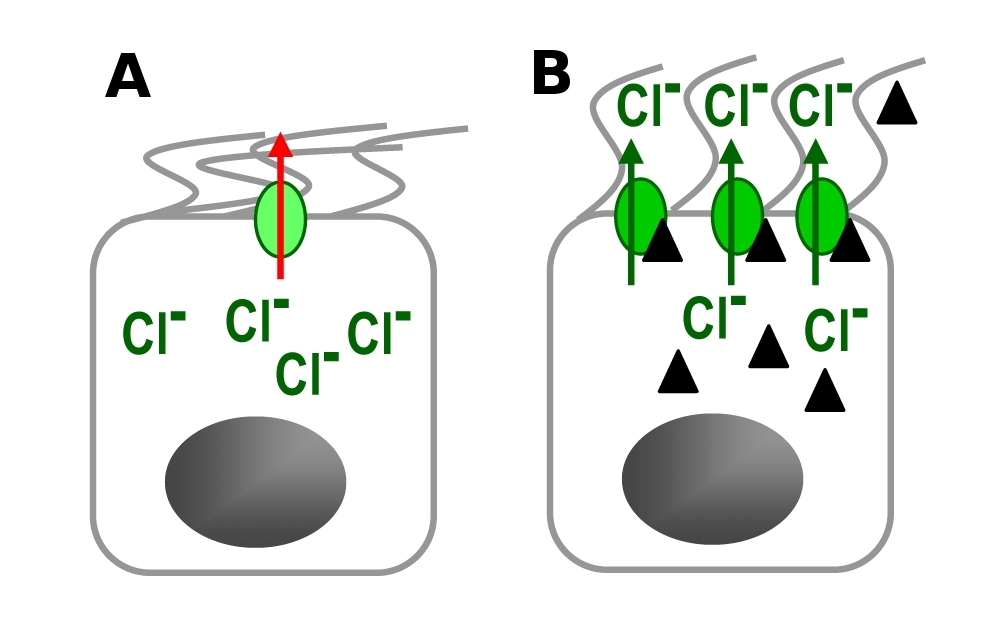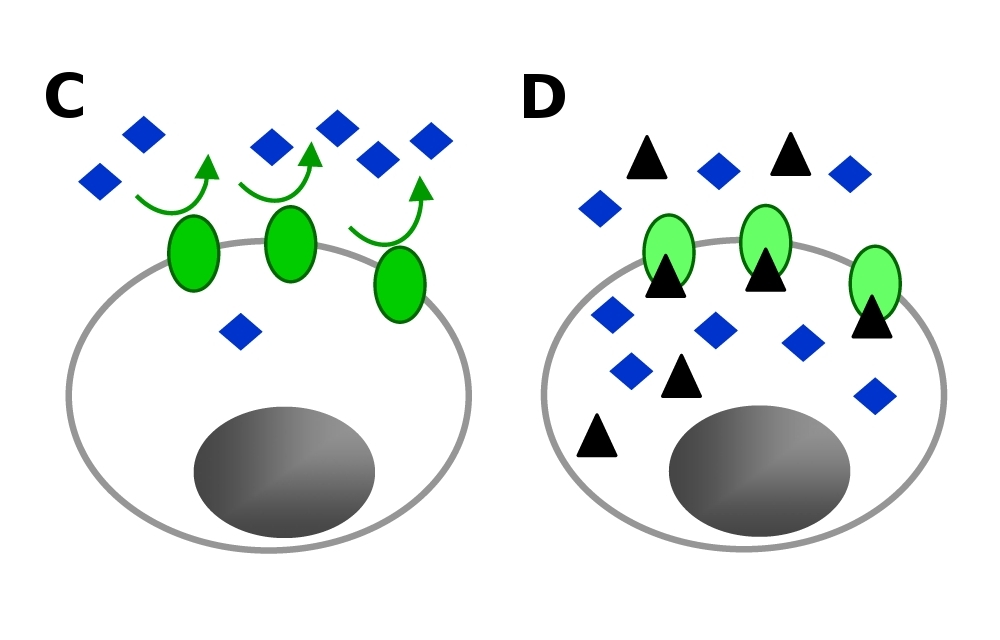
Research - ABC proteins
ABC (ATP Binding Cassette) proteins have important functions in all types of organisms, from bacteria to humans. Most of these proteins are active transporters relocating their substrates through biological membranes by utilizing the energy of ATP. ABC proteins take part in transport of substrates such as lipids, hormones, and immunogenic peptides. By extruding toxic molecules from the cell, some of these transporters serve as a cellular level "immune system". Either their increased or decreased function caused by mutations or altered expression level is responsible for a wide variety of medical challenges. Their failure to translocate physiological substrates results in different kinds of human diseases, such as Tangier disease, progressive familial intrahepatic cholestases, Dubin-Johnson syndrome, pseudoxanthoma elasticum, cystic fibrosis, diabetes mellitus type II, adrenoleukodystrophy, and sitosterolemia.
We focus on two different types of ABC protein related clinical phenomena: cystic fibrosis and multi-drug resistance of cancer cells against chemotherapeutic treatment.
 |
 |
Cystic fibrosis
A well-known ABC protein related disease is cystic fibrosis, which is one of the most prevalent monogenic diseases with high morbidity and mortality. Mutations in CFTR (Cystic Fibrosis Transmembrane Conductance Regulator; green ovals in figure A), which affect the folding, plasma membrane expression, and function of the chloride channel, decrease the salt and water on the airway surface thus impairing mucociliary clearance. This is demonstrated in the figure on the left. Our main objectives are:
- To characterize the structure and dynamics of CFTR;
- To understand the function and regulation of this chloride channel;
- To shed light on the mechanism of disease causing mutations;
- To design "modulator" agents (black triangles in figure B) to restore CFTR expression and function.
Multi-drug resistance
Some of the members of the ABC superfamily have extremely broad substrate specificity and recognize "half of the molecules in the SIGMA catalog" as substrates. These ABC transporters pump out xenobiotics from the cell thus keeping the drug concentration inside the cell below the toxic level (figure C). Although this function of multi-drug transporters (such as MDR1, MRP1, and ABCG2) is extremely important under normal conditions, it is unfavorable during the treatment of many diseases. They impede the entry of many therapeutic agents (e.g. anti-depressants) into the brain and their presence in the gut inhibits the absorption of drugs including anticancer agents. These transporters are also overexpressed in tumors and inhibit the chemotherapeutic drugs from entering the cells and exerting their killing effect. Our main objectives are:
- To understand the mechanism of transport;
- To find "modulator" agents (black triangles in figure D) to inhibit the function of multi-drug transporters and enhance the effectiveness of anti-cancer drugs;
- To identify regions, which can be targeted to modulate the function and stability of ABC proteins involved in human diseases.
To achive our goals we employ classical cell biological and biochemical tools combined with computational methods.
Acknowledgements
Our international collaborators: Funding:- Miklos Kellermayer and Balazs Sarkadi (continuous);
- National Research, Development and Innovation Office (2015-2018);
- Research and Technology Innovation Fund, National Development Agency (2013-2015);
- NKTH-OTKA (2010-2012);
- FP7 PEOPLE IRG (Marie Curie) (2010-2012);
- North American Cystic Fibrosis Foundation (2008-2010);
- Bolyai Fellowship from the Hungarian Academy of Sciences (2009-2012, 2014-2017).
